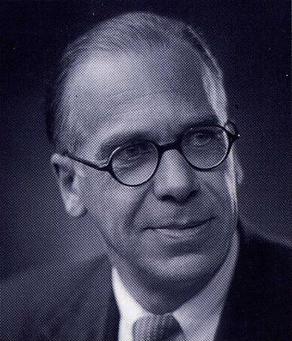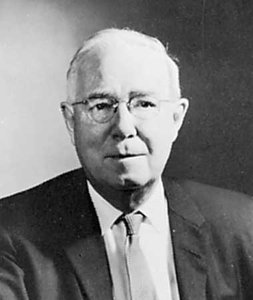Related Research Articles

Franz Schmidt, also Ferenc Schmidt was an Austro-Hungarian composer, cellist and pianist.

Sir Donald Francis Tovey was a British musical analyst, musicologist, writer on music, composer, conductor and pianist. He had been best known for his Essays in Musical Analysis and his editions of works by Bach and Beethoven, but since the 1990s his compositions have been recorded and performed with increasing frequency. The recordings have mostly been well received by reviewers.

The Toccata and Fugue in D minor, BWV 565, is a composition for organ by, according to the oldest sources, German composer Johann Sebastian Bach and is one of the most widely recognisable works in the organ repertoire. Although the date of its origin is unknown, scholars have suggested between 1704 and the 1740s. The piece opens with a toccata section followed by a fugue that ends in a coda, and is largely typical of the north German organ school of the Baroque era.

Toccata is a virtuoso piece of music typically for a keyboard or plucked string instrument featuring fast-moving, lightly fingered or otherwise virtuosic passages or sections, with or without imitative or fugal interludes, generally emphasizing the dexterity of the performer's fingers. Less frequently, the name is applied to works for multiple instruments.

The Winner Records was a United Kingdom-based record label from 1912 onwards. Its records were manufactured by the Edison Bell Record Works, London. This company, founded by James Hough, had originated in the early 1890s as an importer of Edison and Columbia phonograph cylinders; from 1898 Hough had also made cylinder records, initially using a separate company, Edisonia. When Edison set up his own European operation in 1904, the import franchise was withdrawn, but the name Edison Bell remained in use. From 1909 the official name of Edison-Bell was J. E. Hough Ltd.

Friedrich Gulda was an Austrian pianist and composer who worked in both the classical and jazz fields.

Le Tombeau de Couperin is a suite for solo piano by Maurice Ravel, composed between 1914 and 1917. The piece is in six movements, based on those of a traditional Baroque suite. Each movement is dedicated to the memory of a friend of the composer who had died fighting in World War I. Ravel also produced an orchestral version of the work in 1919, although this omitted two of the original movements.

William Alwyn, was an English composer, conductor, and music teacher.
Nikolai Girshevich Kapustin was a Soviet composer and pianist of Russian-Jewish descent. He played with early Soviet jazz bands such as the Oleg Lundstrem Orchestra. In his compositions, mostly for piano, he often fused jazz and classical forms.
Ronald James Stevenson was a Scottish composer, pianist, and writer about music.

Leo Salkeld Sowerby was an American composer and church musician. He won the Pulitzer Prize for music in 1946 and was often called the “Dean of American church music” in the early to mid 20th century. His many students included Florence Price and Ned Rorem.
Ronald Center was a Scottish composer.
Kevin John Bowyer is an English organist, known for his prolific recording and recital career and his performances of modern and extremely difficult compositions.

Toccata, Adagio, and Fugue in C major is an organ composition by Johann Sebastian Bach. As is the case with most other organ works by Bach, the autograph score does not survive. The earliest manuscript copies were probably made in 1719–1727. The title of the piece in these copies is given, as expected of organ literature of the time, simply as Toccata in C major. The piece is an early work, probably composed in the mid-to-late Weimar years, i.e. 1710–1717. It shares some similarities with other toccatas composed around the same time, such as BWV 538, BWV 540, and others: all show the influence of concerto style and form.
Robert McBride was an American composer and instrumentalist.

Trompeta Toccata is a 1964 album by jazz trumpeter Kenny Dorham. It was released by Blue Note Records in 1965 as BST 84181. It was remastered by original recording engineer Rudy Van Gelder in 2006. Trompeta Toccata, as with Dorham's previous album Una Mas, features only four pieces, three of which were written by the trumpeter himself. Trompeta Toccata would be his last appearance as a leader; Bob Blumenthal wrote in his 2006 liner notes for the album that "the remainder of Dorhams' recorded career was confined to sideman appearances that can be counted on the fingers of one hand".
Lora Aborn Busck was an American composer.

Prelude and Fugue in E minor, BWV 548 is a piece of organ music written by Johann Sebastian Bach sometime between 1727 and 1736, during his time in Leipzig. The work is sometimes called "The Wedge" due to the chromatic outward motion of the fugue theme. Unlike most other organ preludes and fugues of Bach, the autograph fair copy of the score survives, though the handwriting changes twenty two measures into the fugue to the hand of Johann Peter Kellner, a likely pupil and acquaintance of Bach who played an important role in the copying of his manuscripts. Because of the work's immense scope, it has been referred to as "a two-movement symphony" for the organ.

August Stephan Alexander Klengel was a German pianist, organist and composer.

The Toccatas for Keyboard, BWV 910–916, are seven pieces for clavier written by Johann Sebastian Bach. Although the pieces were not originally organized into a collection by Bach himself, the pieces share many similarities, and are frequently grouped and performed together under a collective title.
References
- ↑ Laird, Ross (1995). Tantalizing Tingles: A Discography of Early Ragtime, Jazz, and Novelty Syncopated Piano Recordings, 1889-1934 . Greenwood Publishing Group. p. 110. ISBN 978-0-313-29240-8.
- ↑ "Toccata, Fugues, & Other Diversions". AllMusic.com. Retrieved July 12, 2017.